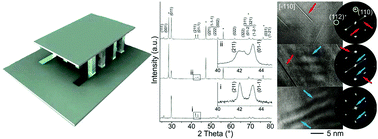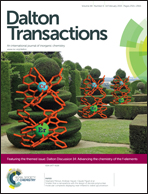Thermoelectric efficiency of (1 − x)(GeTe) x(Bi2Se0.2Te2.8) and implementation into highly performing thermoelectric power generators†
Abstract
Here we report for the first time on a complete simulation assisted “material to module” development of a high performance thermoelectric generator (TEG) based on the combination of a phase change material and established thermoelectrics yielding the compositions (1 − x)(GeTe) x(Bi2Se0.2Te2.8). For the generator design our approach for benchmarking thermoelectric materials is demonstrated which is not restricted to the determination of the intrinsically imprecise ZT value but includes the implementation of the material into a TEG. This approach is enabling a much more reliable benchmarking of thermoelectric materials for TEG application. Furthermore we analyzed the microstructure and performance close to in-operandi conditions for two different compositions in order to demonstrate the sensitivity of the material against processing and thermal cycling. For x = 0.038 the microstructure of the as-prepared material remains unchanged, consequently, excellent and stable thermoelectric performance as prerequisites for TEG production was obtained. For x = 0.063 we observed strain phenomena for the pristine state which are released by the formation of planar defects after thermal cycling. Consequently the thermoelectric performance degrades significantly. These findings highlight a complication for deriving the correlation of microstructure and properties of thermoelectric materials in general.


 Please wait while we load your content...
Please wait while we load your content...